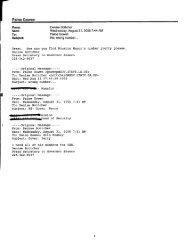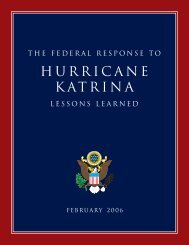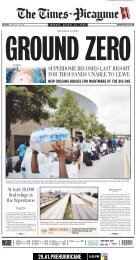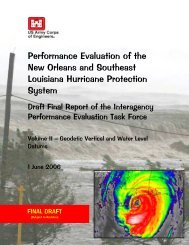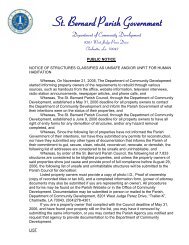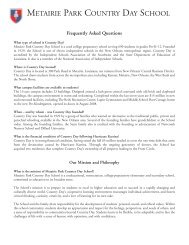IPET Report 3 Vol VIII
IPET Report 3 Vol VIII
IPET Report 3 Vol VIII
Create successful ePaper yourself
Turn your PDF publications into a flip-book with our unique Google optimized e-Paper software.
− Design memorandums and supporting documents<br />
− Construction documents<br />
− Inspection reports<br />
− Katrina damage reports<br />
− Detailed field surveys conducted by the Risk Team to verify the location and<br />
configurations of the HPS.<br />
The information gathered was incorporated into detailed GIS based maps of each basin that<br />
included: locations of all features (Walls, levees, pumping stations, closure gates, etc.), geotechnical<br />
information (boring logs, geologic profiles), aerial photographs and photos of each<br />
feature. Appendixes 2 through 7 contain a complete inventory of the structures, systems and<br />
components of each basin that were considered in the risk analysis. The reader should note that<br />
not all of the structures, systems and components listed have been individually considered in the<br />
risk analysis model. Some items may have been combined, whereas others may not have been<br />
included since they do not play a role in the performance of the hurricane protection system or<br />
the consequences that result in the event of a failure.<br />
For definition of the post-Katrina HPS analyses, the Risk team has coordinated with Task<br />
Force Guardian (TFG) to monitor the improvements that are expected to be in-place on 1 June<br />
2006. These improvements include: placement of temporary closures at the end of the drainage<br />
canals, replacing I-wall with T-walls in some areas, repairs to breached sections of the HPS, and<br />
other measures as outlined in the basin descriptions.<br />
Analysis Assumptions and Constraints<br />
As part of the process of developing the risk analysis model, it was necessary to identify key<br />
assumptions and analysis constraints. Constraints refer to events or factors that were not modeled<br />
or considered explicitly in the analysis. The assumptions and constraints are provided at the<br />
appropriate location in subsequent sections.<br />
The following table lists the analysis limitations or constraints of the risk analysis.<br />
No. Limitation or Constraint<br />
1. Modeling procedures that existed prior to Katrina were used.<br />
2. Geographic area was limited to elements of the hurricane protection system in the basins listed.<br />
3. The risk model does not produce temporal profiles, but spatial profiles accumulated over the entire durations of respective<br />
storms<br />
4. The risk model includes assumptions in various major aspects of this of the hurricane protection system characterization,<br />
hurricane simulation, reliability analysis inundation analysis, and consequence analysis<br />
5. Hazards and thus consequences not considered in the risk analysis are:<br />
a. Wind Damage to buildings d. Indirect economic consequences<br />
b. Fire e. Effect of a release of hazardous materials<br />
c. Civil unrest f. Environmental consequences<br />
6. The performance of the evacuation plan New Orleans was not explicitly modeled in the risk analysis. Evacuation<br />
effectiveness is however considered in the consequence analyses.<br />
<strong>Vol</strong>ume <strong>VIII</strong> Engineering and Operational Risk and Reliability Analysis <strong>VIII</strong>-9<br />
This is a preliminary report subject to revision; it does not contain final conclusions of the United States Army Corps of Engineers.



